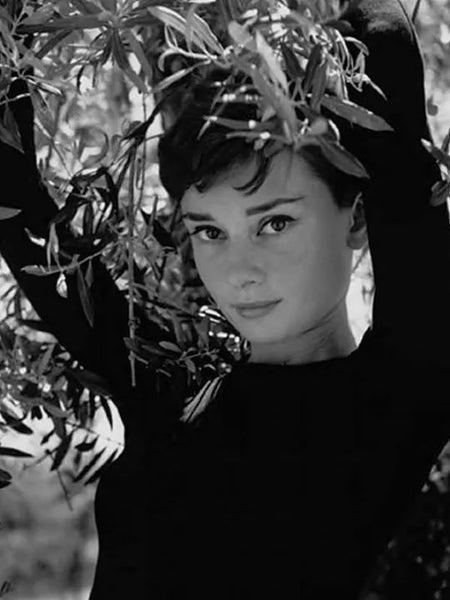
By Shiloh Richter, M.A.
3 Mars Deux Mille Vingt-Trois
Truman Capote didn’t write BREAKFAST AT TIFFANY’S. Willa Cather did. Truman Capote stole it, and Audrey Hepburn knew it (and set out to do something absolutely marvelous about it).
It’s the caper of the millennium and it’s ON.

Audrey Hepburn’s inherent soft, deeply caring nature may not have been written into the roles she played, as in Breakfast at Tiffany’s, Paris When It Sizzles, or My Fair Lady, but there was a hope in her that she could soften the world to care, and that is what her vulnerability and courage brings from her own light, shining through the movie screen and enduring beyond it for an influence even now, possibly even opened more now as we redefine ourselves away from structural and behaviorally-patterned authority. As well, art is a phenomenal medium for her as it does seek to open and change us with collective insight, sometimes collective joy and triumph. And so no matter what the role, her brightness and her vulnerability were put on the line because she did care deeply and that is her spirit that exudes further while also giving the art the chance to alter our expectations of culture. That gets conveyed in her roles without the saying so. It’s a silent, deeply resonant statement beyond the roles themselves. Richard Shepherd, a producer of Breakfast at Tiffany’s said of her,
“Everything you have read, heard, or wished to be true about Audrey Hepburn doesn’t come close to how wonderful she was. There’s not a human being on earth that was kinder, more gentle, more caring, more giving, brighter, and more modest than Audrey. She was just an extraordinary, extraordinary person. Everyone should know that'' (Wasson 160).
That there is hope is because here it is in her hard trying and radiant beauty and it isn’t going away. She gave herself to that hope. Her impact, then, is what we are dealing with in the art and its breaking open fixed boundaries against freedom of Being because culture has become deadly, and the real concern: real life for every Being. There’s the cultural impact of the art that envisions something different, and there’s the dharma body of the person herself. Zen Buddhist Master Thich Nhat Hahn describes it this way: “We are our actions.” As he has said, that’s what we are. Or, as John Mayer sings from making 2012’s Born and Raised, “Love is a verb.” There then, in the art, is also the dharma body. This is no small thing as it easily lives beyond and outlives our forms, even song or movie forms. It’s bigger than the art itself. But the art shows what we need to know to free ourselves, to find joy, to be awe struck, to find our way, to experience insight, and to discover what love is. It’s working on a different plane, then, it is working on the level of Beingness. And who doesn’t want to know their way around in that? It is also, then, to open a closed culture to the realness of life and its extraordinary, immeasurable experience and value for that Beingness. And what is more, for InterBeingness.

And so there is heroism in Audrey’s choice of actions and choice of roles, even when it was going up against a darkness that nobody was seeing as a darkness, as fame was covering it up with a flashy and monied, and therefore rendered as ”powerful and influential” (yet underneath it was actually just manipulative: Truman Capote always reading his audience, responding to get the desired effect–and everyone was an audience) façade; as opposed to the softness of Audrey’s self-effacing radiance. Audrey’s fame wasn’t flashy, but nonetheless radiant and more deeply influential. It was based on the very real. On another level of what was happening then, or different realm on the same Earth (different way of Being with the conditions), along with her actions, there is also the more real than perceptions, the sublime at work. She may have believed the roles weren’t doing enough good, but there was a continuum blooming with Breakfast at Tiffany’s, Paris When It Sizzles, and through My Fair Lady. Her work is inspired, and that works on a different level.
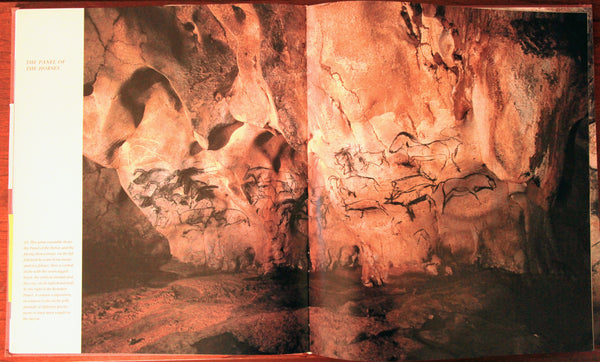
Cussie and I writing about the cave artwork at Chuavet in the Auvergne-Rhône-Alpes region, Southern France.

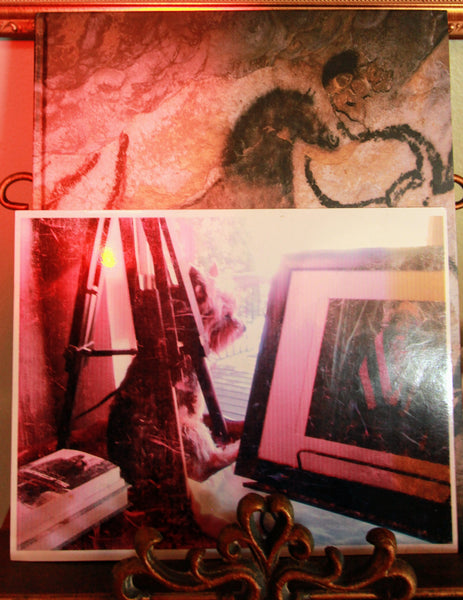
While Audrey remained kind to Truman despite knowing what she had to do that was right and important, there is a vast difference in the heart of the actions they both were taking. It is important now to show the foundation and ramifications of the difference and then to look at what was actually happening on both “realms”: the mundane Truman thought he was manipulating with appearances for short-term effects of money, adulation, and attention, and a soulful one transpiring into a much larger picture beyond the ordinary. The 1st century Roman Empire’s Longinus’ On the Sublime, offers one way of seeing it:
“In the treatise, the author asserts that ‘the Sublime leads the listeners not to persuasion, but to ecstasy: for what is wonderful always goes together with a sense of dismay, and prevails over what is only convincing or delightful, since persuasion, as a rule, is within everyone's grasp: whereas, the Sublime, giving to speech an invincible power and [an invincible] strength, rises above every listener’. According to this statement, one could think that the sublime, for Longinus, was only a moment of evasion from reality. But on the contrary, he thought that literature could model a soul, and that a soul could pour itself out into a work of art. In this way the treatise becomes not only a text of literary inquiry, but also one of ethical dissertation, since the Sublime becomes the product of a great soul (μεγαλοφροσύνης ἀπήχημα, megalophrosunēs apēchēma). The sources of the Sublime are of two kinds: inborn sources (‘aspiration to vigorous concepts’ and ‘strong and enthusiastic passion’) and acquirable sources (rhetorical devices, choice of the right lexicon, and ‘dignified and high composition’).” (Wikipedia Retrieved 28 February 2023).
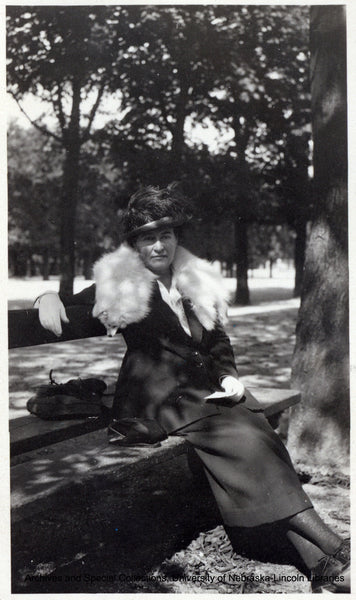

The world that Audrey hoped and worked for was also in motion, despite the harshness she found. For example, when Audrey agreed in 1960 to make Breakfast at Tiffany’s, there was something in the air that was also awakened within Willa’s writing congruent to the movement to give her work back with the spirit, or from the soul, from which it was written. The next year on the release of the movie in October 1961, Irving Stone’s novel The Agony and the Ecstasy about Michelangelo’s life and art had just been published in March. That novel set in motion the very ground-breaking in 1962 in New York City to bring Michelangelo’s (St. Peters) Pieta with Mary and Jesus to the 1964 World’s Fair. That is closely linked to themes in Willa’s work. And so with this literal breaking New York City soil for this most impassioned transformed sadness into radiant love, the very words were set back into motion: Willa’s “Coming, Aphrodite!” is one of the major sources Truman took for Breakfast at Tiffany’s. Willa wrote that story for herself during the Christmas season of 1919 and not for set publication. (In the fall of 1919, exactly 100 years later, Vanilla Custard Pudding and I were on our way home from Aspen from seeing John at the Snowmass Jazz Festival and stopped in Santa Fe at Willa’s cathedral.) At that Moment of Audrey taking on Willa’s role, Willa’s “Coming, Aphrodite!” was coming at the same time as Michelangelo’s Mary, a feminine symbol very much coming from the line of the mother and lover goddesses. Likewise in this continuum, Audrey had just gotten off the set of The Nun’s Story where she walks out from the cathedral after being in front of Michelangelo’s Bruges Madonna and Child, into her own freedom and Beingness. When her character entered that convent they forced her, Gabrielle, to give up her pen (which then makes her typewriting even funnier in Paris When It Sizzles with the character of the same name). In her very choices Audrey was bringing the power and soul of the writing, on a monumental, if unknown at the time, sublime scale. She was doing it by what was deeply right to her. And so in Audrey’s strength of soul and character and her effervescent luminosity, a much larger picture was in fortuitous motion in reality, altering and changing the course of reality and culture. (And as I wrote about before in Cosmic alignments, Sheryl Crow, among many others, of course, was born right after this In February 1962 with the wild alignments so matching 7 B.C.). Whereas Willa had written about prominent symbols of ships as well, this is a ship headed to her New York City that would have been astounding to her.
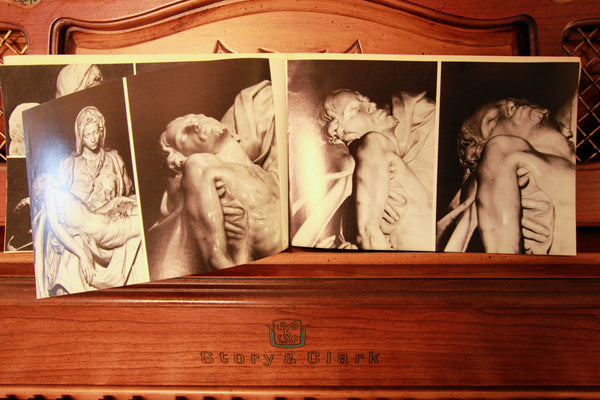
Robert Hupka’s photographs of Michelangelo’s Pietà at the New York City 1964 World’s Fair.
The Pietà had never left St. Peter’s since Michelangelo had placed it there with his own hands and upon Audrey’s motion, it too was in motion coming to New York City. And here it was, with its miracle of creation, essentially coming with Audrey, likely even made culturally possible by Audrey’s light and her actions, her spirit making the impossible now possible. Whatever Truman thought he was getting away with because his deceit was not recognized or said out loud, and whomever was lavishing all the praise and excessive attention on his desperate self as he soaked it up and planned for more, as grand as the fame seemed and seemingly sparkled, were hardly a match for Audrey following what mattered to her, and for the works that Willa had written from the fire of inspiration met with realization and now embodiment—something Truman wasn’t even capable of while he ransacked her words to make himself into something people would fawn over, all the while reading people to see if they were believing his lies so that he could continue, and when necessary, when it was made evident in the works, to change faces and pose as the criminal who meant to transgress and trespass from the “sexy baby.” And there it is on Willa’s and Audrey’s parts, not persuasion, but ecstasy: “what is wonderful . . . and a sense of dismay,” “an invincible power and strength,” “a soul poured out of itself into a work of art,” and that soul being undaunted by the conditions, even rabid plagiarism, even sixty-two years later or 103 years after Willa put it to the page in New York City at 5 Bank Street. It is eternal because it came from her known depths and can’t be touched, only awakened.

When Willa stepped foot on the ground in Arizona in 1912 from her realization in Provence in 1902, and leading to this from that realization that would become The Song of the Lark (1915) and lead in a continuum through the rest of her works of female embodiment, numinosity, and realization, something else unimaginable happened with another ship on its way to New York City at that very moment and very much unlike the one coming with the movement of Audrey and the Pietà. In that Moment with Willa, the flashy, showing, ostentatious, pompous meant-for-attention-grabbing Titanic sank with the atrocious loss of life. The ship sank the night of 14-15 April 1912. It launched its maiden voyage on 10 April as Willa was also on her way to the Southwest. Willa arrived in Winslow, Arizona on 12 April 1912. Two nights later it sank. Today, writing this, would be my Vanilla Custard Pudding’s born day (28 February); I picked him up on 10 April 2009. His birth momma’s name was “Mystical Ms Molly Brown.” The dates of that sinking, that night, crossing in the middle of the night from the 14th into the 15th, are in my name, Shiloh, upside down, 407145, 4 being April, the last three numbers being 1 and 4+5 = 9 or 19, and the first four numbers 4+0+7+1=12, or 1912, and the last three numbers 14 & 15.
“Is the gate code still your birthday?”
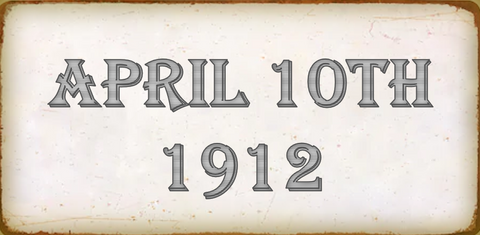
John Mayer would release Born & Raised 100 years later in the spring of 2012 with Katy Perry’s protection against the fraudulent continuing of the falsely-caused public crucifixion which was done for fame, money, and adulation, the very opposite of Mary’s transformed compassion into radiance, the healing of suffering, in the Pietà.
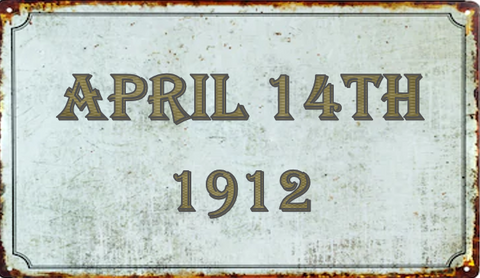
Willa wrote a story about the sinking that Truman also ransacked for Breakfast at Tiffany’s called “The Diamond Mine.” He thought he had found one and could bejewel himself fraudulently. (Willa wrote and published it in NYC in 1916 after The Song of the Lark was published in 1915.) That story starts out:
“I first became aware that Cressida Garnet was on board when I saw young men with cameras going up to the boat deck. In that exposed spot she was good-naturedly posing for them–amid fluttering lavender scarves–wearing a most unseaworthy hat, her broad, vigorous face wreathed in smiles. She was much too American not to believe in publicity. All advertising was good. If it was good for breakfast foods, it was good for prime donne,--especially for a prima donna who would never be any younger and who had just announced her intention of marrying a fourth time” (emphasis mine).
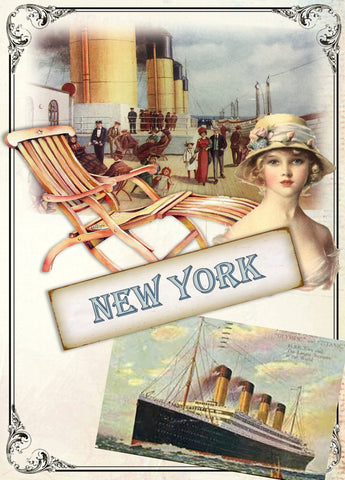
By the end of the story Cressida Garnet is down at the bottom of the ocean with the Titanic and those who supposedly loved her are plowing through her belongings for what they can grab while complaining about it. Within two months of that sinking, on her way back, as I wrote before, Willa would ride by what would be our mountain, arrive back east on 12 June 1912, and publish “The Bohemian Girl,” the beginnings of Breakfast at Tiffany’s and the further works she was seeing into, including how to alter the societal structure in the cultural height of New York City so that it had different grounding, different roots, and would be itself inspired.

Photo: (Cloudcroft, NM, where the train would have passed through, still has the train bridge through the mountains like the vintage photograph. Near there is where the recent rock slide and tunnel through the mountain are.)

As later Audrey did, Willa Cather knew the difference. Look at the epigraph of her first collection of short stories The Troll Garden in 1905 from Christina Rossetti’s poem “Goblin Market” (1862) : “We must not look at Goblin men, / We must not buy their fruits; / Who knows upon what soil they fed / Their hungry, thirsty roots?” She’s looking at the roots of human character and of culture. And she knows she’s looking at goblins. How shocking then when we realize what happened to her work and with Sam Wasson’s quote about Breakfast at Tiffany’s producer Marty Jurow, “Marty looked up. There was the leprechaun Truman Capote, bouncing ahead, extending a grin to all his admirers, and catching air kisses thrown at him from all ends of the restaurant. Yes, Marty thought, he was looking at a picture of pure showbiz, an entrance staged and costumed to Truman’s exacting perfection.” The vision, the transcendence would be lost on us if we ignored that the Goblin took the work and did not understand it; it was not of his soul–as the crimes were.
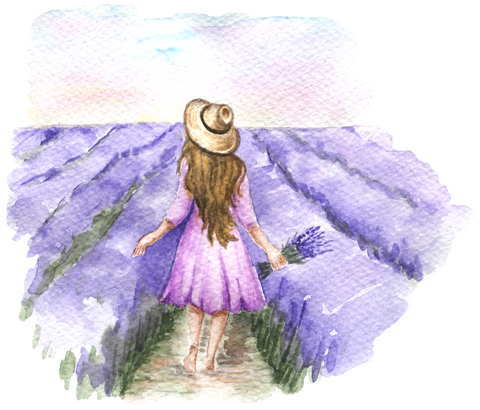
There is also the suggestion in the quotes she chose that Willa knew what she and her writing were facing. In scholar Cynthia Griffin Wolff’s introduction to Willa’s work Coming, Aphrodite! and Other Stories, she writes about the second epigraph of that first story collection, quoting, “A fairy palace, with a fairy garden: . . . Inside the trolls dwell . . . working at their magic forges, making and making always things rare and strange.” Those looking in don’t actually understand what is being made, created, written, how and from here it is created and what it all means, what worlds are created and how to navigate them by gaining insight. Woolf writes,
“The quotation from Kingsley’s lecture suggests both Cather’s own sense of isolation and, more broadly, the unavoidable division between an artist and those who cannot understand the creative act. Kingsley’s lectures told of the invasion of Rome by the barbarians: The Romans are the artisans of civilization while [ . . . ] those outside the garden, are both wonderstruck and envious at the artisans’ creations. Eventually, they break in and overrun the garden only to find that they cannot rebuild what they have demolished” (emphasis mine).
Looking at Breakfast at Tiffany’s in this way, the creators and Audrey putting it back together from Willa, the one who could see inside of it and the reasons why, the roots of it and its implications, and Audrey’s giving her embodiment . . . is a monumental act of quiet, far-resonating heroism. Woolf continues,
“The quotation from Kingsley has to do with the progress of civilization; it suggests that although separation from others is an inevitable component of the creative process, art and creativity are intrinsically good; they contribute to the progress of [human]kind. However, it also indicates that the artist and her work will be the object of others’ malignant envy [ . . . ] Taken together, [Willa’s] two quotations seem to describe the precarious situation of an emergent female artist: she will become foreign to those who cannot understand her vocation and subject to the envy of others [ . . . ].”
Moonbeam and our Parisian Red Walls, 2008
Look how hard the navigation, how fragile the outcome of civilization when the art is that easily sold for surface celebrity that underneath means harm to anyone and everyone for empty, screaming, desperate self-adulation. Audrey did not do public harm to Truman, but she set the dharma body of the work straight with brilliance, beauty, caring, and humor for THIS Moment, able to alter lives even now. The act of creation is the real thing, even sacred to Beingness (and in Dante, those who take that content and sell it are committing simony, suggested here in the divine sense also by Willa’s title “Coming, Aphrodite!”). And one last statement on Willa’s choice of epigraphs from Woolf: “In one respect, however, these quotations make a unified statement: there is something ‘strange’ and magical about art; and if it has beauty and the power to elevate our lives, it also has the potentially destructive component. One might tumble into art’s compelling illusions–and drown.”
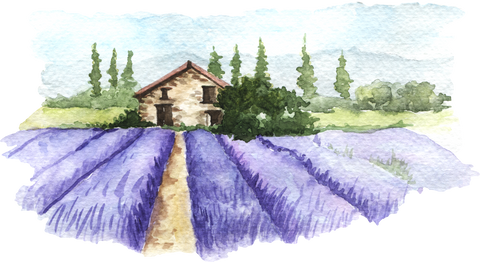
Audrey did not come to this caring and taking action by an easy path. Her own sorrows and disappointments were intense. Her son Sean Hepburn Ferrer in his memoir of her Audrey Hepburn: An Elegant Spirit describes,
“The ‘emotional hunger’ that ‘food cannot alleviate,’ which is how she often described children she met during her UNICEF years, was something she knew how to recognize [ . . . ] having experienced it herself, she had an instinctual desire to share it with her husbands and help heal that missing link [ . . . ] The voice of her inner child calling out for that embrace was so all-encompassing that she never understood how others might have processed that hunger differently. Yet her deeply romantic nature prevented her from demanding, from asking for that quenching. She wanted it to come freely, like flowers that are sent and not requested [ . . . ] There is only sadness when two souls cannot merge. The snarling void left by her father’s absence bore an equal share of the responsibility in the failure of both of her marriages [ . . . ] exhausted by an authoritarian mother, she wished for a world where caring and love came freely [ . . . ] just like the children she would later fight for, those children who in one way or another hadn’t benefited by the simple right to their own childhood. Her emotional world was simple: If you love with all your might and take care of the other, he or she will do the same in return. How disappointing it is when we realize that the world isn’t that way. [ . . . ] She was so emotional because she feared an old age, not of wrinkles, but of disenchantment. Yet she emerged from her own life as a powerful person: strong-willed and sure of what she wanted. She was, as some liked to describe her, a steel hand in a velvet glove” (11-14).

“Moon River” for which Audrey originally performed in the movie in 1961, won the 1962 Grammy for Record of the Year and Song of the Year. So while Audrey’s voice was filling the air waves and her face and Beingness the wonder breakthrough of the screen, its own Huckleberry Girl, and when the song was winning at the Grammys, the ground was being broken for the propitious sacred arrival of the Pietà to the continent of spiritual and bodily freedom for its awakening. Irving Stone, the author of The Agony and the Ecstasy soon after the publication gave all his years of research on Michelangelo, even having lived in Florence researching the details and nuances of Michelangelo’s life, to the head librarian of UCLA, Lawrence Clark Powell, the founder of this very journal in 1957 on which I write, Books of the Southwest. Irving Stone’s intensive, dedicated research included that:
“Stone lived in Italy for years visiting many of the locations in Rome and Florence, worked in marble quarries, and apprenticed himself to a marble sculptor. A primary source for the novel is Michelangelo’s correspondence, all 495 letters of which Stone had translated from Italian by Charles Speroni and published in 1962 as I Michelangelo, Sculptor. Stone also collaborated with Canadian sculptor Stanley Lewis, who researched Michelangelo’s carving technique and tools” (Wikipedia “The Agony and the Ecstasy” Retrieved 10 July 2021).
And all these thousands of words I have written to John!

In convergence of these energetic Moon rivers, this was happening while Truman Capote was raiding Willa’s work and publishing Breakfast at Tiffany’s in 1958. In the same moment as the movie and the novel, “In January 1961, Bobby Zimmerman, who was at the time remembered back in Hibbing as the rock-n-roll kid silenced by the principal–if he was remembered at all–arrived in New York City as Bob Dylan, an anonymous folkie determined to never be quieted again” (Life Magazine’s Bob Dylan: America’s Greatest Songwriter, 17). Bob Dylan’s neighborhoods were the places I visited when I went to see John in concert in New York City in 2010. It is where John would sing “A Face to Call Home” for the first time in December at the Village Underground. The magazine features a poster from 6 November 1961 (the month after the release of Breakfast at Tiffany’s) from The Folklore Center on MacDougal Street describing, “and his first album hasn’t even been released!” The energetic world was on its path to powerfully carrying forward and breaking oceanically wide open. Before coming for that auspicious trip to New York City, I had come through there once before. Willa had left for her first visit to Provençe in 1902. I came through New York City for the first time in 2002 on my way to France, exactly 100 years later. The Pietà was gorgeously photographed at the 1964 World’s Fair whose theme was “Peace Through Understanding.” “Place of Peace” is one meaning of my name. Audrey would return to Europe and buy her property La Paisible, meaning “The Peaceful,” and she would pass away at that ‘place of peace.’ Robert Hupka’s deeply resonant photography of Mary holding Jesus was first intended to be the artwork to a commemorative album of the music he had selected to play in the Vatican’s exhibit at the World Fair.

That all then led artist Maxine Pendry in the later 1960s to paint the face of Jesus from the Pietà in a work inspired by the name of the novel, entitling her painting The Agony. That painting, reminiscent even of Michelangelo’s face, became the cover of my dad’s gospel album entitled Face to Face, recorded when I was about 2-3 years old, c. 1973. I have kept a copy of the album all my life, carrying that portrait. The Pietà on the ship had arrived at 44th and Hudson, the year of my dad’s birth and Katy’s name (who also began singing gospel). What has only happened once is John and I seeing each other “face to face” at a Meet and Greet in 2017. I had kept my dad’s album with me and it becoming frayed and bleached out, and all those years not knowing that it would lead me to the recognition scenes of the Homeric epics.


In those epics there is the culmination at the bed Odysseus built of the live, rooted olive tree. In NYC in 2010 when I walked into the Olive Tree Cafe, it was like walking into a childhood memory of a very similar place where I had fallen in love with black and white movies, the very same movies playing on their screen. The title of my dad’s album comes from the Hebrew Bible scripture about knowing true identity, love and truest kind of recognition:
“For now we see a reflection as in a mirror [a glass darkly]; then we shall see face to face. Now I know in part; then I shall know fully, even as I am fully known” (NIV 1 Corinthians 13:12).
“Who Did You Think I Was?”
That Meet and Greet took place on John’s The Search for Everything Tour, at Isleta, NM. Most likely John was not aware of it when it happened, but he began that very tour singing “How Great Thou Art” with the New Zealand Kapahaka as a tribute to the Christchurch and New Zealand which had recently had a terrorist attack on two mosques. That song is the last song on my dad’s album. It was all already set into motion.
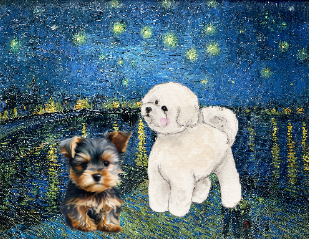
Vanilla Custard Pudding (2009❤️🔥2021 with whom all of this writing has happened, even now in deep InterBeing, Cussie alive in every cell of my Being and still taught by his incredible dharma body guiding me with courage and the purest love I’ve ever known), my ancient breakfast recipe and golden yolk of the sun broken open at my heart, my huckleberry friend following our moon river together that I’ll always be on with him, my le Petit Rhône, and my le Grand Rhône, Moonbeam (2007❤️🔥2015)
—-from My Ardèche Wolf Heart


